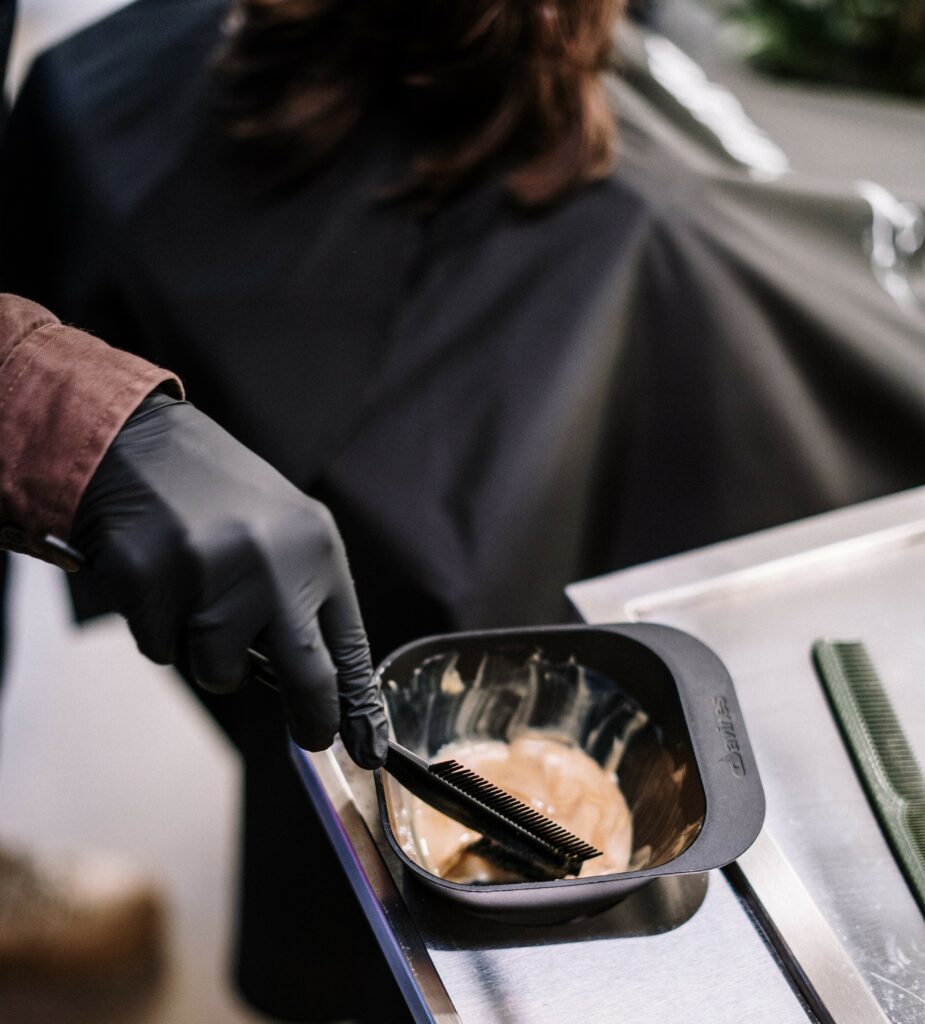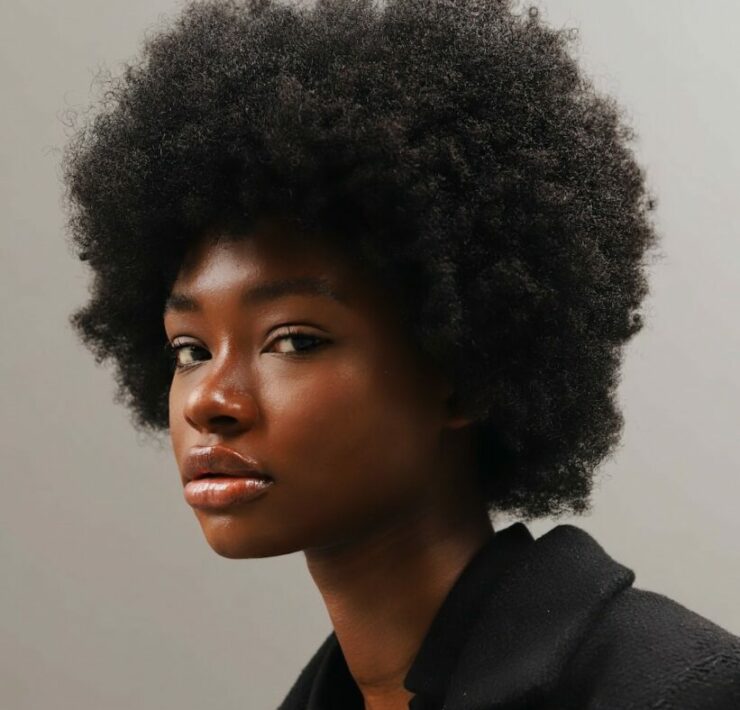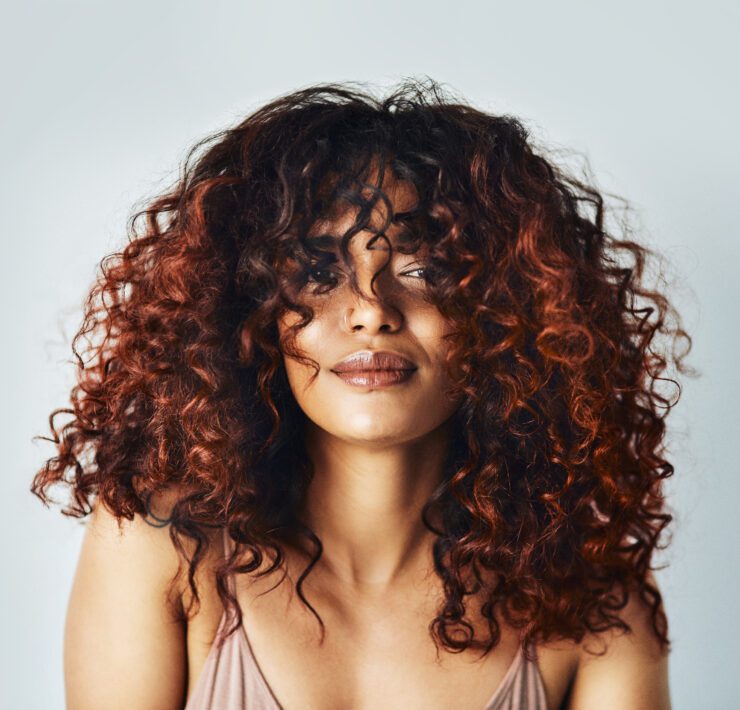
Have you recently decided to transition into the natural curly hair world? Welcome – here is some information to get you started and help you along the way.
There is so much information online that it can quickly become overwhelming – so take a deep breath and read on as we help you embrace your hair discovery journey.
The first decision you will need to make is whether to chop off all the chemically treated hair (aka The Big Chop) or slowly transition, which is more gradual and means cutting slowly as your natural hair grows.
What Exactly Is Meant By Transitioning?
Transitioning refers to the process of growing out your natural curly texture while slowly cutting off the chemically treated damaged ends. It is the process by which a person moves away from chemical straightening treatments and towards their natural curl pattern.
It is also important to understand what you are transitioning from. There are different chemical treatments that can be applied to your hair to create smooth, shiny, straight hair. Say for instance, you have loose curls – then you may have only gone for a keratin treatment. This will fade in a few months’ time, so no need for a cut there. However, if you have had a chemical straightener, then the transition will take longer with more patience. But do not fear! Allow this site to serve as your new bestie and educated resource during your transition, even after.

What Is A Chemical Relaxer?
A relaxer is a chemical that permanently straightens your curly hair. The hair strands are made of keratin proteins and get their elasticity, strength, and curl pattern from the disulfide bonds. The more bonds – the curlier the hair is. Chemical relaxers break these bonds, which allows the keratin proteins to be realigned and straightened. This is why the hairstylist will apply the product to the hair and then pull it through, pulling the hair as straight as possible, realigning the curl pattern.
Relaxers must be repeated frequently (usually every eight weeks) to address new growth. This means that there is always overlap, as new treatments are applied on previously treated hair. Relaxer treatments are known to cause damage, making hair strands prone to drying and breakage.
These treatments are irreversible. The only way to get rid of them is to cut off the treated and damaged hair. This explains why transitioning from a chemical relaxer can only be done one of two ways: The Big Chop or with time, as you allow the new growth to slowly get longer.
What grown-out relaxed hair typically looks like. // Instagram via @glamheadzsalon
But Wait… There Are Other Treatments You May Have Used:
Japanese Straightening/Thermal Reconditioning: This treatment uses both chemicals and heat to alter the structure of the hair by loosening the hair proteins and reshaping hair cells. While it can be damaging, this treatment fades out after six to seven months, after which your hair’s natural texture will return.
Keratin Treatment/ Brazilian Straightening: During this treatment, a coating of keratin is painted on and sealed onto the hair shaft. The hair appears shiny and frizz-free due to this moisture barrier. The results will last approximately three months before they fade away allowing the hair’s natural structure to re-appear.
If you use one of these treatments, transitioning is easy – wait for the results to fade while you continue your healthy hair care routine.
However, if you must choose between the Big Chop and a slow transition consider these first:
- How much time do you have to care for your hair and how much effort are you willing to put into it? As you transition, you will experience some potentially different and new types of textures at the same time. All of which will require special care and have specific styling needs. This section of your hair will require a gentle and patient hand in order not to cause more damage. So the question is do you have the time and patience necessary? New growth may be curly and healthy, and there may be a clear difference between new growth and older chemically treated hair. This section may be especially vulnerable to breakage, while the remaining older hair, the ends, may be curly, wavy or straight, dry, and damaged. You may end up with stringy ends which are more difficult to care for and style. You should start snipping off these ends as you slowly transition.
http://bringonthefro.blogspot.com/2013/08/final-length-check-damage-and-big.html
- Another consideration is to rock styles like braid-outs and twist-outs to create a uniform texture throughout your hair. These styles can protect your fragile ends by keeping them from being further damaged by excessive manipulation. However, remember even with these styles, the hair must still be cared for with regular washing, conditioning and moisturizing routines. These styles are more appropriate for those with very curly, kinky, and coily hair as this hair will hold the style better and longer. Please, always ask yourself if you are comfortable with a hairstyle and if it fits your lifestyle. Many styles can lead to great hair as well as become a timesaver.
- The transition period will be vastly different from person to person, especially those with different hair textures and curl patterns. Those with looser curls will find transitioning not as much of a challenge, as someone with very curly, kinky or coily hair. This is because the transition from chemically treated to natural loose curls will be less severe. Of course, factors such as the actual condition of the hair, i.e. how damaged, dry, etc. the hair is, remain the important determiners.
- While The Big Chop may seem scary and extreme, remember it is way less work, and in some ways a fresh start for a whole new you that can be embraced and discovered.
Before you decide one way or another, challenge yourself to wear your hair naturally for at least one week. No flat irons, no chemicals, no heat styling, but apply tender loving care and a lot of patience. This will give you an opportunity to ultimately make a better decision.
Whatever Your Choice, Take These Steps:
- Find A Curly Hair Stylist: Whether you are cutting your hair short or just trimming off damaged ends, enlist the assistance of a hairstylist who is knowledgeable and experienced with the process of going natural. They can also advise you regarding protective hair styles and an appropriate healthy haircare routine to follow. Find a curly hair stylist here.
- Make A Plan: Obtain the right tools and products, as well as the knowledge to know how to style and care for your hair during this new journey. Take a look at nourishing hair oils and masks that may help keep your hair moisturized and nourished. Educate yourself by speaking with experts, reading and watching YouTube influencers who know what they are talking about. For example, check out Journeytowaistlength (Shanique Buntyn on FB).
- Adjust Your Hair Budget: You probably know exactly what products to use and where to get them at the lowest prices. Unfortunately, these products may not work on your natural hair. As you transition, you may need two sets of products. You will need to learn a whole new routine, which is best discovered via trial and error. Do not worry, the cost will be worth it when you have a healthy head of natural hair. We have already done some of the research for you. So check out the lists that identify ingredients and recommend specific products for specific needs.
- Try To Avoid Heat Styling: Although it will help you blend your hair textures, it will also damage the new growth, and can cause even more breakage at the point where the two textures meet.
- Take Good Care Of Your Hair: Even while wearing protective styles, make sure to take good care of your hair. Consistently cleanse and condition your hair. Also remember that a tight bun or ponytail can cause damage to the new growth.
- Patience And Gentle Care Are Essential: Since the line of demarcation (where the new and old texture meet) is especially fragile, resist the urge to use force when detangling. Instead use your fingers and gently detangle the hair. Remember that the tools (comb and brush) used on chemically straightened hair may not work for your new natural texture. Do some research and invest in a wide tooth comb.
- Accessorize: Use scarves, headbands, and cute clips to style new growth and hide the different textures. Change it up and avoid becoming bored with protective styles.

- Be Patient: You will need time to adjust to your new look. Do not be fooled by photo-shopped images on Instagram and other social media sites. Everyone’s hair is unique. Things will not always go quite as planned, which is normal. So relax and enjoy the ride. In the end, it is just hair, it will grow back and you can always change your mind later. Embrace it.

Some Additional Tips:
- Intensive moisturizing and protein treatments are essential to managing the damaged hair.
- Try the L.O.C. method – this means layering a leave-in, an oil and then cream to lock in moisture. Keep a weekly wash routine as well
- Try a silk wrap or pillowcase to avoid friction.
- Get regular trims until all the chemically straightened ends are gone.
- Avoid sleeping on wet hair – wet hair is more fragile and is more easily damaged.
- Do not sleep with your hair loose, as this will create too much friction. Or try a simple loose topknot, instead.
- Be ready for bad hair days. Not to worry, they will pass.
- Make sure to moisturize thoroughly. Take the time to part your hair in sections and apply product all over (nape, middle, crown, sides).
- Your curl pattern will seem to change as you figure out what products work and which do not.
- Try not to get discouraged. It takes time. We are here to help guide you every step of the way!
Your Transitioning Essentials:
- To keep your hair healthy, invest in a sulfate-free cleanser and silicone-free conditioner.
- Take care of potential buildup with a good clarifying cleanser.
- To give the straight ends some texture try a gel or mousse.
- Deep condition to lock in moisture.






